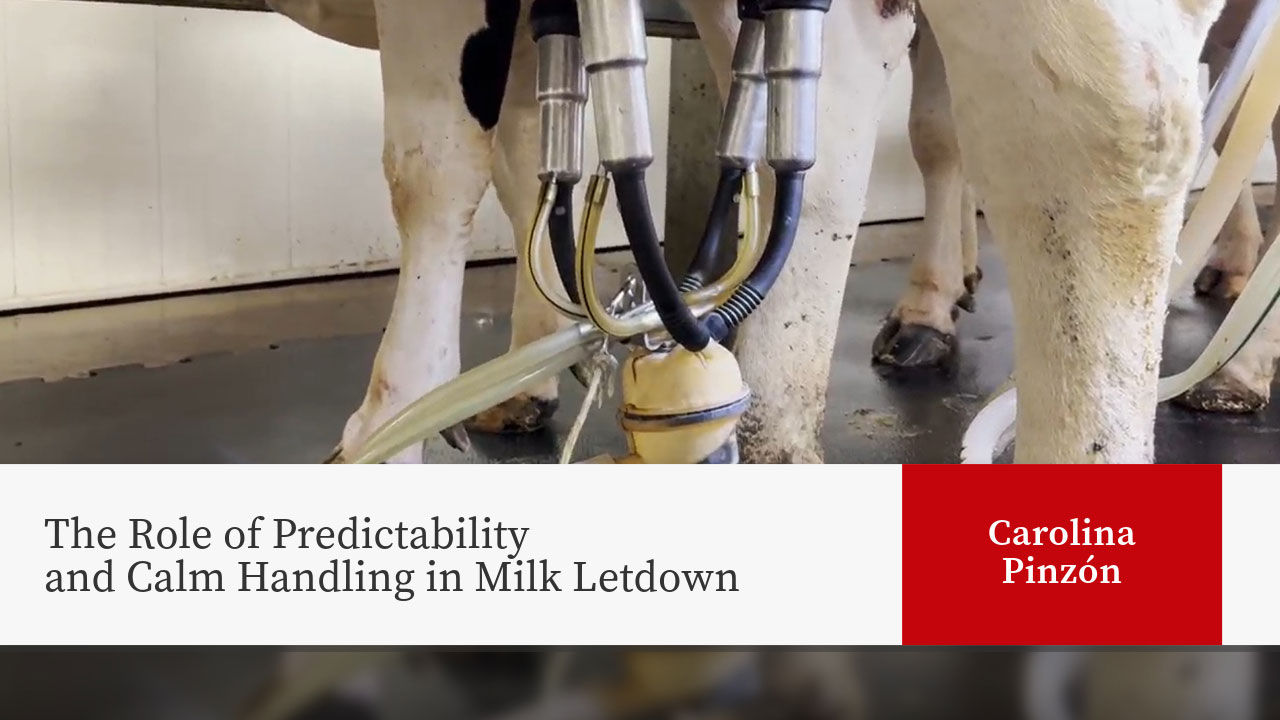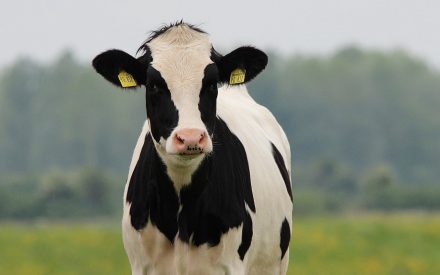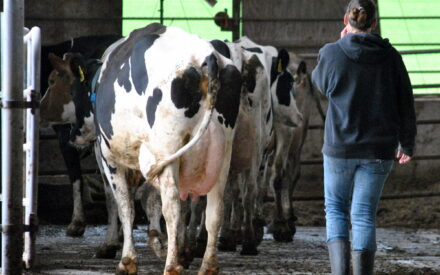English | Español
Introduction
Cows are creatures of habit. They thrive on predictable routines, gentle handling, and calm surroundings. A consistent routine in the milking parlor helps cows to relax. This allows their natural physiology to work in your favor. When cows feel safe, their bodies release oxytocin more easily. Oxytocin supports an efficient and complete milk letdown. Learn how calm and predictable handling plays a direct role in both udder physiology and parlor efficiency.

The Physiology Behind Milk Letdown
Milk letdown is a hormonally driven process. Before milking, about 80% of the milk in the udder is stored in the alveoli and small ducts. This milk is not available until milk letdown reflex occurs. When a cow is properly stimulated during udder preparation, her brain signals the release of oxytocin from the pituitary gland. Oxytocin travels through the bloodstream and causes the smooth muscle cells around the alveoli to contract. These are called myoepithelial cells. When they contract, the milk is pushed into the gland and teats cisterns. The milk is then available for extraction by the milking machine.
Stress and Its Impact on Milk Letdown
Fast and complete milk removal requires teat stimulation that triggers the release of oxytocin and the milk ejection reflex. However, stress, pain, or fear can activate the release of adrenaline. This can happen when cows hear loud noises, see sudden movements, encounter rough handling, experience mastitis discomfort, use poorly functioning equipment, or experience other negative interactions. Adrenaline interferes with the oxytocin response. Milk letdown becomes delayed or even blocked. This leads to incomplete milk removal, more residual milk in the udder, and extended time with the milking machine attached to the udder, which can lead to poor teat health. First-calf heifers may be especially sensitive due to their limited experience in the parlor.
Management Strategies to Enhance Milk Letdown
Proper handling before milking is critical. Research shows that any excitement or agitation within 30 minutes before milking can disrupt milk letdown. Poor handling can interfere with milk letdown even if udder preparation is done correctly. Promoting calm, consistent handling is a low-cost, high-impact strategy that supports milk letdown, udder health, and parlor efficiency.
When cow handling and milking routines align with the cow’s natural physiology, performance improves. So does job satisfaction and safety for workers. Therefore, it is beneficial to train employees on low-stress cow handling. A good training program highlights the importance of routine and calm behavior and encourages patience and quiet handling. You can even teach these skills using tools like video games—for example, the free app Mooving Cows designed at UW-Madison https://animalwelfare.cals.wisc.edu/mooving_cows/
Focus on Positive Cow-Human Interactions
Positive interactions help cows release oxytocin and support efficient milking. Negative interactions, on the other hand, block oxytocin and reduce milking performance. The table below summarizes what to do—and what to avoid—when handling dairy cows:
| ✅ DO THIS | ❌ NOT THAT |
|---|---|
| Maintain a stress-free, calm, and consistent environment. | Allow a stressful, noisy, or unpredictable environment. |
| Use calm, quiet, and gentle handling. | Use poor handling practices like sudden movements, yelling, or hitting. |
| Follow a consistent and predictable milking routine. | Have inconsistent or inadequate udder preparation. |
| Provide physical stimulation of the udder such as fore-stripping, wiping, or scrubbing teats. | Skip or provide insufficient udder stimulation. |
| Use soft vocalizations or allow familiar sounds like the milking machine. | Allow loud voices, loud music, yelling, shouting, or barking dogs. |
| Keep cows healthy and free of pain or discomfort. | Allow cows to experience pain, discomfort, or untreated illness. |
| Build trust through routine and calm human-animal interactions. | Create fear with unfamiliar objects, loud noises, or sudden movements. |
Summary
Predictability is essential for dairy cows. They thrive on routine. When cows know what to expect, their bodies are more likely to release oxytocin. Remember, this hormone is responsible for milk ejection. When cows enter the parlor calmly and let down their milk easily, the milking process becomes faster, smoother, and less stressful for everyone. Calm handling benefits both the cows and the people working with them. Reducing stress during cow movement and milking should be a management priority. Calm handling leads to win-wins for animal welfare and milking performance.
Author

Carolina Pinzón-Sánchez
Bilingual Dairy Outreach Specialist – As a statewide Dairy Outreach Specialist, Carolina identifies needs and incorporates research findings into high-quality outreach education programs around dairy production.


 Top strategies to streamline your milking parlor
Top strategies to streamline your milking parlor Dry Cow Heat Stress Management
Dry Cow Heat Stress Management ▶️ Watch:The importance of cow handling and a revolutionary way to practice
▶️ Watch:The importance of cow handling and a revolutionary way to practice Mooving Cows: Learn basic cow handling skills to stay safe and keep cows calm
Mooving Cows: Learn basic cow handling skills to stay safe and keep cows calm


